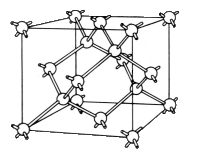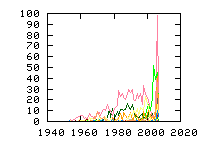« Previous
Next »
(5 hits, 1/1)
Showing
10, 25, 50, 100, 500, 1000, all papers per page.
Sort by:
last publication date,
older publication date,
last update date.
- 1. J. Appl. Phys. 102, 013530 (2007) , “Fluorine-vacancy complexes in Si-SiGe-Si structures”, D. A. Abdulmalik, P. G. Coleman, H. A. W. El Mubarek, and P. AshburnFluorine-vacancy (FV) complexes have been directly observed in the Si0.94Ge0.06 layer in a Si-SiGe-Si structure, using variable-energy positron annihilation spectroscopy (VEPAS). These complexes are linked to the significant reduction of boron diffusion in the SiGe layer via... (Read more)
- 2. Phys. Rev. B 72, 045219 (2005) , “Fluorine in Si: Native-defect complexes and the supression of impurity diffusion”, Giorgia M. Lopez, Vincenzo Fiorentini, Giuliana Impellizzeri, Salvatore Mirabella, Enrico NapolitaniThe transient enhanced diffusion of acceptor impurities severely affects the realization of ultrahigh doping regions in miniaturized Si-based devices. Fluorine codoping has been found to suppress this transient diffusion, but the mechanism underlying this effect is not understood. It has been proposed that fluorine-impurity or fluorine–native-defect interactions may be responsible. Here we clarify this mechanism combining first-principles theoretical studies of fluorine in Si and purposely designed experiments on Si structures containing boron and fluorine. The central interaction mechanism is the preferential binding of fluorine to Si-vacancy dangling bonds and the consequent formation of vacancy-fluorine complexes. The latter effectively act as traps for the excess self-interstitials that would normally cause boron transient enhanced diffusion. Instead, fluorine-boron interactions are marginal and do not play any significant role. Our results are also consistent with other observations such as native-defect trapping and bubble formation. (Read more)
- 3. Appl. Phys. Lett. 85, 1538 (2004) , “Observation of fluorine-vacancy complexes in silicon”, P. J. Simpson, Z. Jenei, P. Asoka-Kumar, R. R. Robison, M. E. LawWe show direct evidence, obtained by positron annihilation spectroscopy, for the complexing of fluorine with vacancies in silicon. Both float zone and Czochralski silicon wafers were implanted with 30 keV fluorine ions to a fluence of 2×1014 ions/cm2, and studied in the... (Read more)
- 4. Phys. Rev. Lett. 93, 245901 (2004) , “Ab Initio Calculations to Model Anomalous Fluorine Behavior”, Milan Diebel, Scott T. Dunhammplanted fluorine is observed to behave unusually in silicon, manifesting apparent uphill diffusion and reducing diffusion and enhancing activation of boron. In order to investigate fluorine behavior, we calculate the energy of fluorine defect structures in the framework of density functional theory. In addition to identifying the ground-state configuration and diffusion migration barrier of a single fluorine atom in silicon, a set of energetically favorable fluorine defect structures were found (FnVm). The decoration of vacancies and dangling silicon bonds by fluorine suggests that fluorine accumulates in vacancy-rich regions, which explains the fluorine redistribution behavior reported experimentally. (Read more)
- 5. Phys. Rev. Lett. 90, 155901 (2003) , “Fluorine in Silicon: Diffusion, Trapping, and Precipitation”, X. D. Pi, C. P. Burrows, P. G. ColemanThe effect of vacancies on the behavior of F in crystalline Si has been elucidated experimentally for the first time. With positron annihilation spectroscopy and secondary ion mass spectroscopy, we find that F retards recombination between vacancies (V) and interstitials (I) because V and I trap F to form complexes. F diffuses in the V-rich region via a vacancy mechanism with an activation energy of 2.12±0.08 eV. After a long annealing time at 700ºC, F precipitates have been observed by cross-section transmission electron microscopy which are developed from the V-type defects around the implantation range and the I-type defects at the end of range. (Read more)
« Previous
Next »
(5 hits, 1/1)
Showing
10, 25, 50, 100, 500, 1000, all papers per page.
Sort by:
last publication date,
older publication date,
last update date.
All papers (3399)
Updated at 2010-07-20 16:50:39
Updated at 2010-07-20 16:50:39
(view as: tree
,
cloud
)
| 1329 | untagged |
Materials
(111 tags)
Others(101 tags)
Technique
(46 tags)
Details
(591 tags)
Bond(35 tags)
Defect(interstitial)(18 tags)
Defect(vacancy)(15 tags)
Defect-type(19 tags)
Element(65 tags)
Energy(8 tags)
Isotope(56 tags)
Label(303 tags)
Sample(17 tags)
Spin(8 tags)
Symmetry(15 tags)

